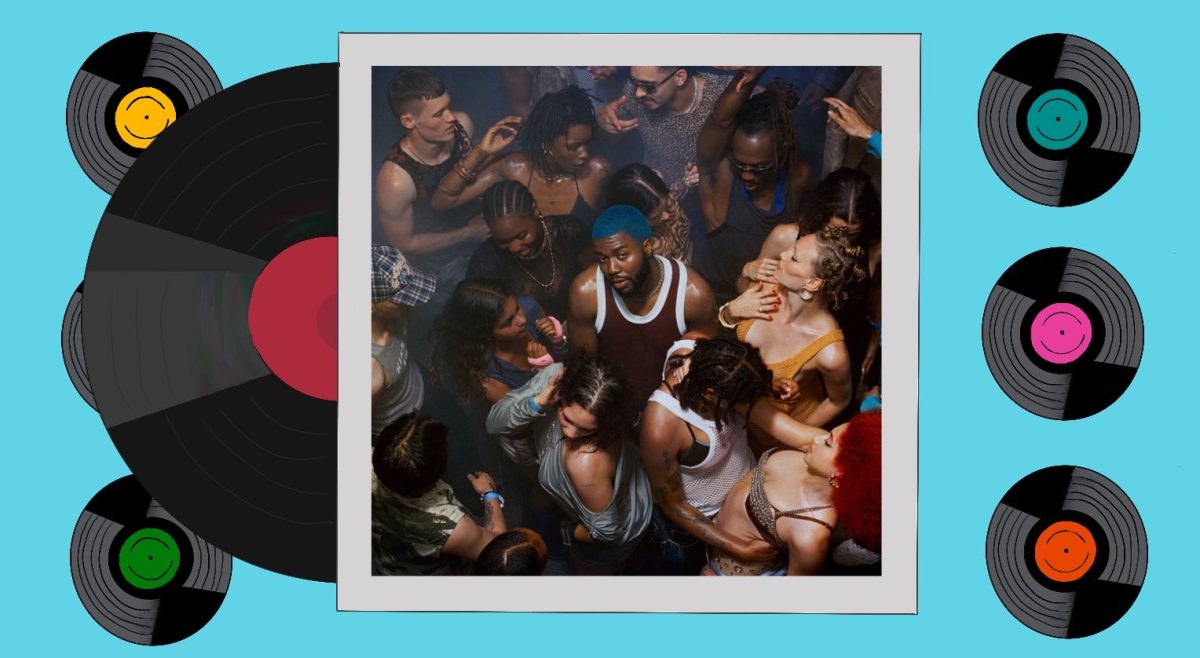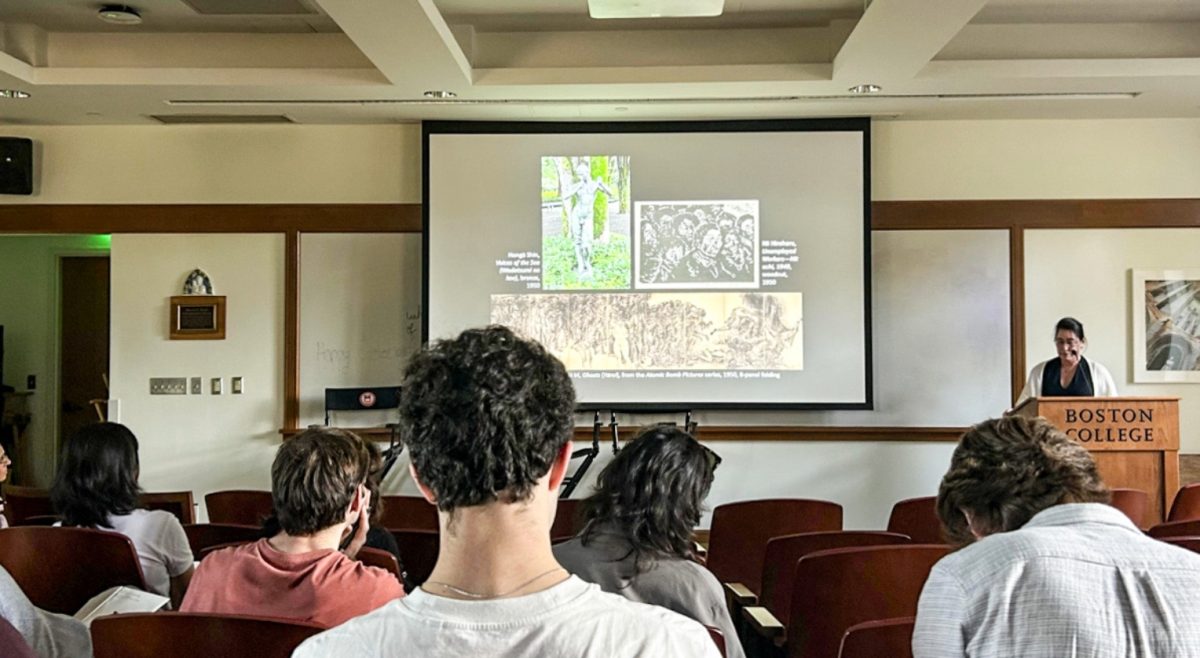Winter may, in fact, be coming, but for at least one more night, fall was very much alive.
The University Chorale’s Fall Concert felt like church. Maybe it’s because it was held in a church—the Trinity Chapel. The two liturgical Mozart pieces certainly added to the effect. Maybe it was the presence of well-dressed adults. Probably a combination of all three and other elements hidden from even a trained observer. And, like church, the Fall Concert was a chance to see your friends dressed up in their best formal black garb.
A little after 8 p.m., the University Chorale, a group of more than 100 students, stepped behind where the altar usually stands in the Trinity Chapel in Newton and belted their way through an hour-and-a-half performance, accompanied by professional soloists Jean Danton, Shannon Lebron, Michael Calmes, and Garret Murphy. Calmes’ tenor was particularly impressive.
Chorale performed a short Mozart piece, “Missa Brevis in C Major,” before moving to a substantial rendition of Mozart’s Requiem. The Chamber Singers—a group of 20 students within the University Chorale—performed the short Missa Brevis before the whole group joined forces for the final and much longer Requiem.
Fantastic music with the Boston College Chorale @bc pic.twitter.com/7sV8hP08dI
— Ed Burke (@edburke45) November 15, 2014
It all came together well, the University Chorale’s extended “so long” to fall. Death was the theme—the end of fall accompanied by one of the last pieces Mozart ever wrote, a requiem he in fact couldn’t finish before his death. As cliche as it may sound, the concert may have dwelled on impending death, but did so through a host of voices moving together in the usually somber chapel.
The Requiem has both a compelling backstory and dramatic form. “What I find most interesting about the Requiem is that Mozart didn’t finish the piece,” said Chorale Social Director Ellie Tanji, A&S ’15. “He died before he could finish it, and it’s a funeral mass, so it’s really cool to be able to, as we’re singing, know what parts Mozart wrote, and what parts his protege finished. It’s really challenging.”
One of the Requiem’s defining qualities was varying volume and expressive tone. “It’s really loud, almost in your face,” said Chorale President Jose Magraner, A&S ’15. “There are some points when it’s really sweet, and then it just goes [clap] straight back to big huge chorus. It’s a really interesting back and forth, give and take that Mozart wrote.”
Friday’s show was dynamic, filled with explosions of passion and strokes of intensity, adding a surreal character to Trinity Chapel.
John Finney is ready for the Fall Concert tomorrow, are you? As in, do you have your tickets? http://t.co/tDAnasnJcD pic.twitter.com/Xzmi7Bjq6b
— BC Chorale (@BC_Chorale) November 13, 2014
Another defining characteristic of the performance was the “battle” between the male and female voices throughout—the male voices would come thundering in before the female voices sweep in and out. The back and forth between these voices is what kept the audience engaged for the hour-long concert.
“It’s kind of like a tug of war, but you both want to win,” Magraner said. “There’s a bit of push and pull here and there, trying to be really loud, and then pulling back to let the other half get their time in the spotlight.”
After a while, Mozart’s Requiem took on a dream-like quality. It grew to more than a song—and that’s probably, in part, because it’s just short of an hour long—but it goes back to its dream-like quality. There reaches a point during Mozart’s Requiem when you can’t tell how long you’ve actually been sitting there, listening to these voices glide delicately around each other. And then, all of a sudden, it’s over.
The feel of over 100 voices singing the Requiem had a primal quality to it.
“It feels like you turn into one big motion,” Magraner said. “People are singing other notes, but when it comes all together, it feels like it’s one movement. It’s unlike anything else—I don’t know—it’s good.”
Featured Image by Clare Kim / Heights Staff


















